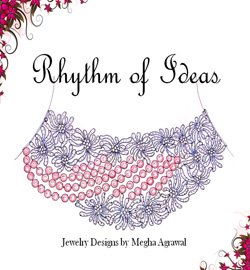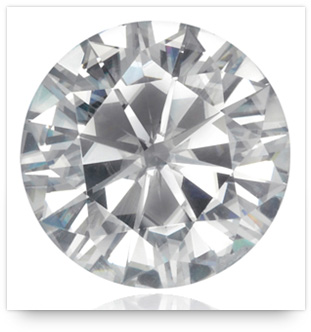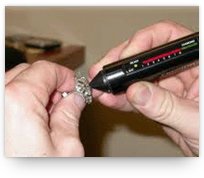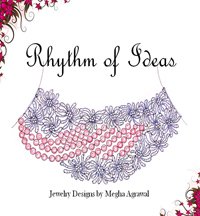Moissanite - The Diamond Simulant
Moissanite which is chemically Silicon Carbide (SiC) got its name in 1905 in the honor of Nobel Prize winner Dr. Ferdinand Henri Moissan, who discovered the minute quantity of this mineral in 1893 in ancient meteorite in Arizona.
Although found in nature, its particles are too small to be considered for gemological purpose. However, because of its excellent optical properties (refractive index and dispersion) which can outperform even diamond and that too at a fraction of cost, it is created synthetically in labs to fulfill its demand.
So, it was in 1995 - i.e. more than hundred years after its discovery - when Charles & Colvard partnered with Cree (a North Carolina-based R&D lab) to develop it artificially using silicon carbide.
And thereafter in 1998, commercially-produced moissanite was introduced to the jewelry world that caused quite a stir because of its superior optical properties and physical properties comparable to diamond.
Remember, whatever moissanite stones you find in jewelry market are all synthetic versions produced by Charles & Colvard. So, if someone sells moissanite terming it as natural, then it means he/she is lying.
Also, even though moissanite is less hard than diamond, but when it comes to toughness moissanite surely leads the race because it doesn't have natural fractures that can crack if the stone is subjected to an type of impact.
Jewelry Industry Loosing Sleep
When moissanite was introduced in market, thermal testers of those days were not that advance and were not equipped enough to differentiate between diamond and moissanite, because of their nearly same thermal conductivity.
So, this became a big pain-point for jewelers and diamond industry in general,
as moissanite (which is many times cheaper than diamond) would easily pass the thermal test without getting
distinguished from diamonds, and slip into diamond supply chain leading to dubious practices.
| Thermal Test - Since diamond is a good thermal conductor (i.e. heat flows easily through it) compared to diamond simulants, so thermal probes are used to differentiate between diamond and its imitations. These instruments help in detecting the flow of heat through the object being tested, thereby indicating real or fake diamond. |
However, with advancement in technology and with the advent of new sophisticated thermal testers, the difference between these two stones can be now easily detected.
Thermal Tester
Difference Between Moissanite and Diamond
| Moissanite | Diamond |
|---|---|
| It is composed of hexagonal-bonded silicon carbide molecules. | It is composed of tetrahedral-bonded carbon atoms. |
| It is Anisotropic (or doubly refractive). This means that when a ray of light is passed through the stone, it slows down and bends and splits into two rays. Due to this doubled image of the opposite facet edges are visible. | It is Isotropic (or singly refractive). This means that ray of light is not split at the time of refraction. Due to this single facet edges are visible. |
| Refractive Index is 2.65 - 2.69. Due to higher RI compared to diamond, it shows more brilliance (mirror-like shine). | Refractive Index is 2.42. |
| Dispersion is 0.104. Due to higher dispersion compared to diamond, it displays more fire effect (white light splitting into rainbow color). | Dispersion is 0.044. |
| Unaffected by heat up to 1800 degree centigrade. | Will burn around 800 degree centigrade. |
| Specific Gravity is 3.2. | Specific Gravity is 3.52. |
| Hardness on Mohs Scale is 8.5 - 9.25. | Hardness on Mohs Scale is 10. |
Advantages of Moissanite over Cubic Zirconia
Although, moissanite is comparatively more expensive and less easily available than cubic zirconia, but it still has few advantages over CZ that you must weigh-in while on a search for a diamond simulant.
- Moissanite is harder and tougher than cubic zirconia. Therefore, former is less likely to get scratched and chipped, making it more durable for daily-wear.
- With higher refractive index (2.4 vs 2.15) and displaying more dispersion effect (0.1 vs 0.06), moissanite is optically superior to CZ. This in other words mean, moissanite displays more brilliance (mirror-like reflection) and fire (rainbow colors), making it more sparkling and shimmering compared to CZ.
- Moissanite is less prone to getting dirty due to body oil, dust etc. Due to this, it maintain its sparkle for longer period without requiring frequent cleaning.
Therefore, if you are hunting for a not-so-expensive diamond-like stone, then moissanite (can even come at one-tenth the price of similar quality diamond) can be the best answer because even with such a low investment you wouldn't be compromising on the "brilliant statement".
Return from Moissanite to Diamond Formation page
Return from Moissanite to Diamond Jewelry Homepage
I hope you'll not mind sharing this on Twitter, Facebook and with everyone else :)
Feel free to share if something is in your mind and want it to be covered on this site.
My Newsletter
Did you liked this article? Sign-up my FREE weekly newsletter and I'll send you more awesome new additions on this website along with latest jewelry happenings around the world, and download my Jewelry Design Album for FREE!
 |
|




